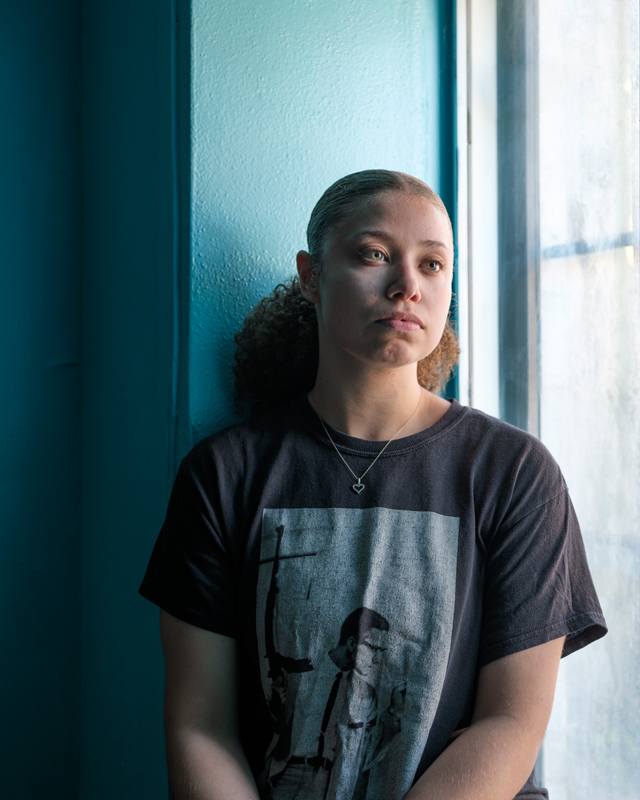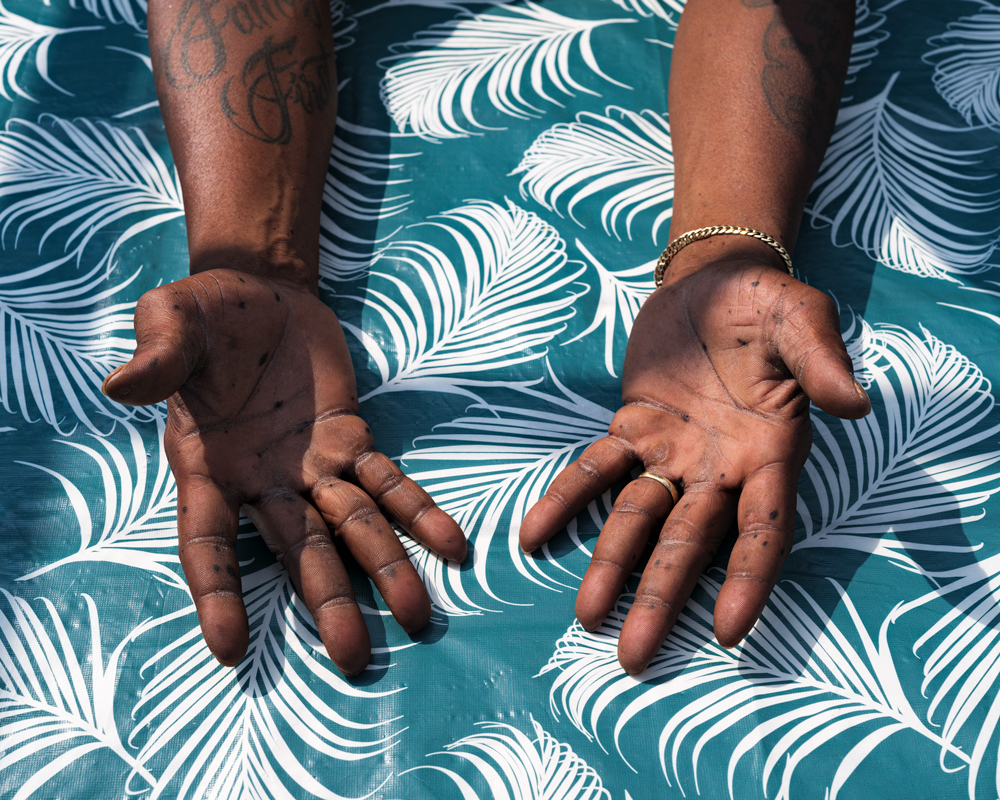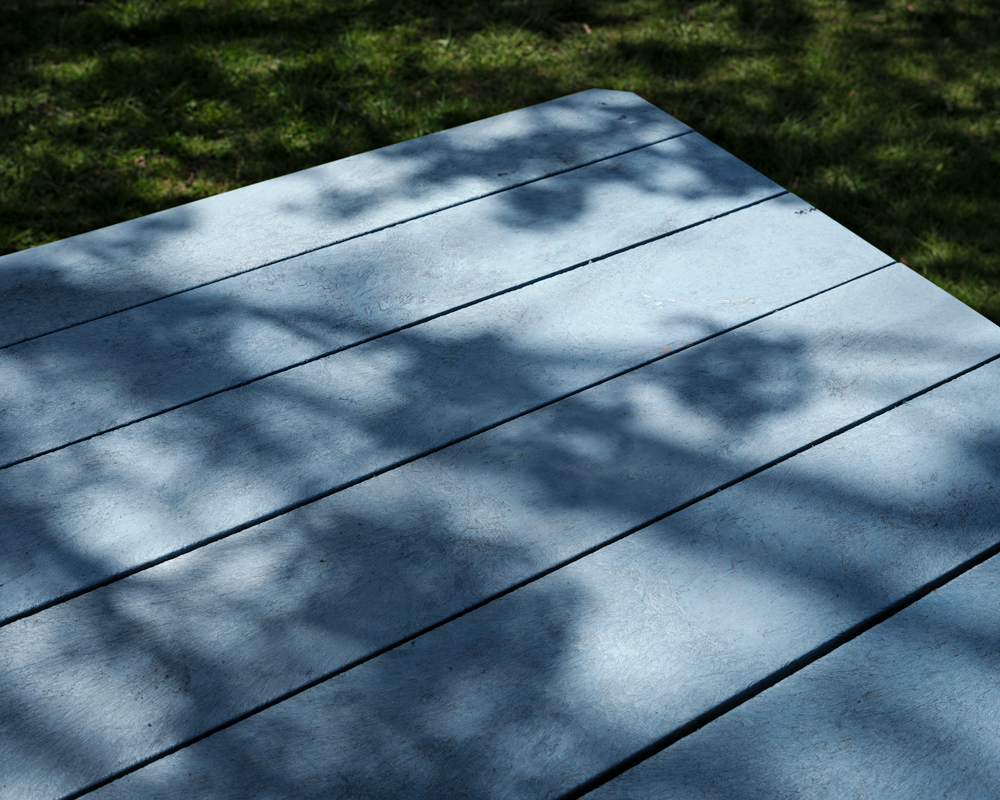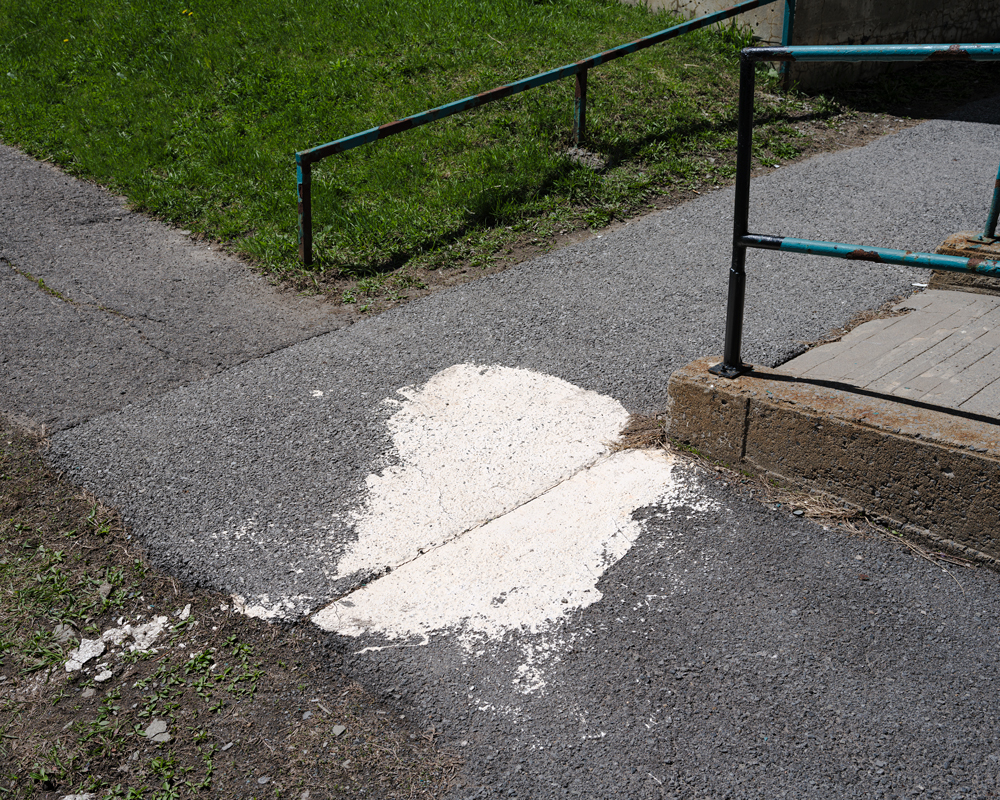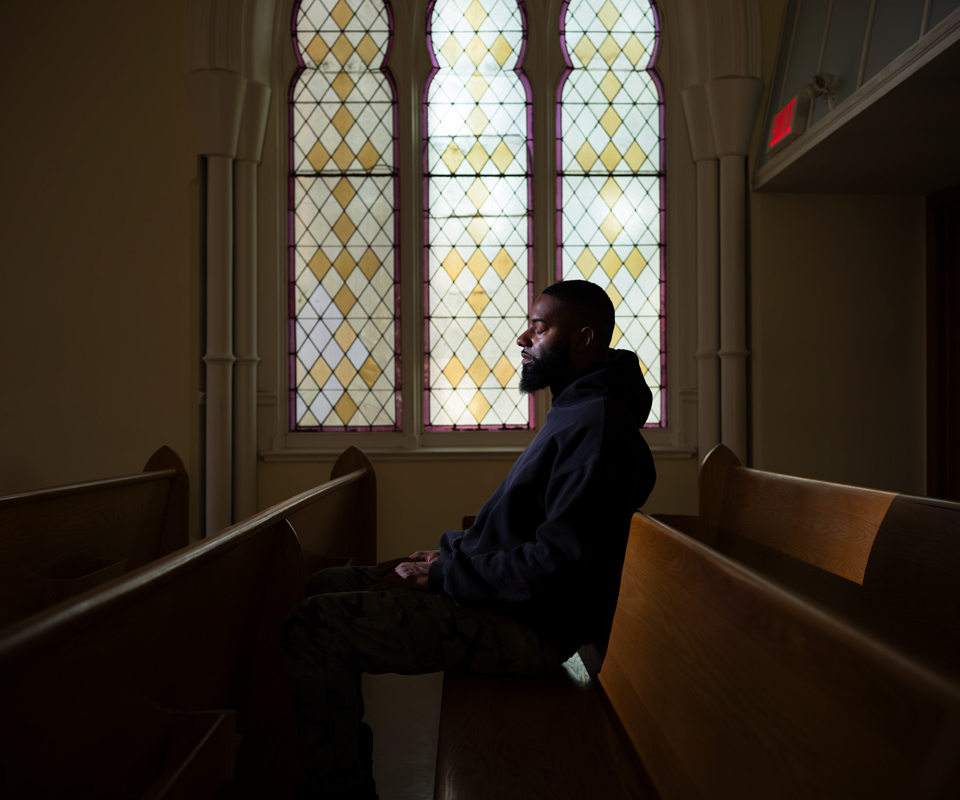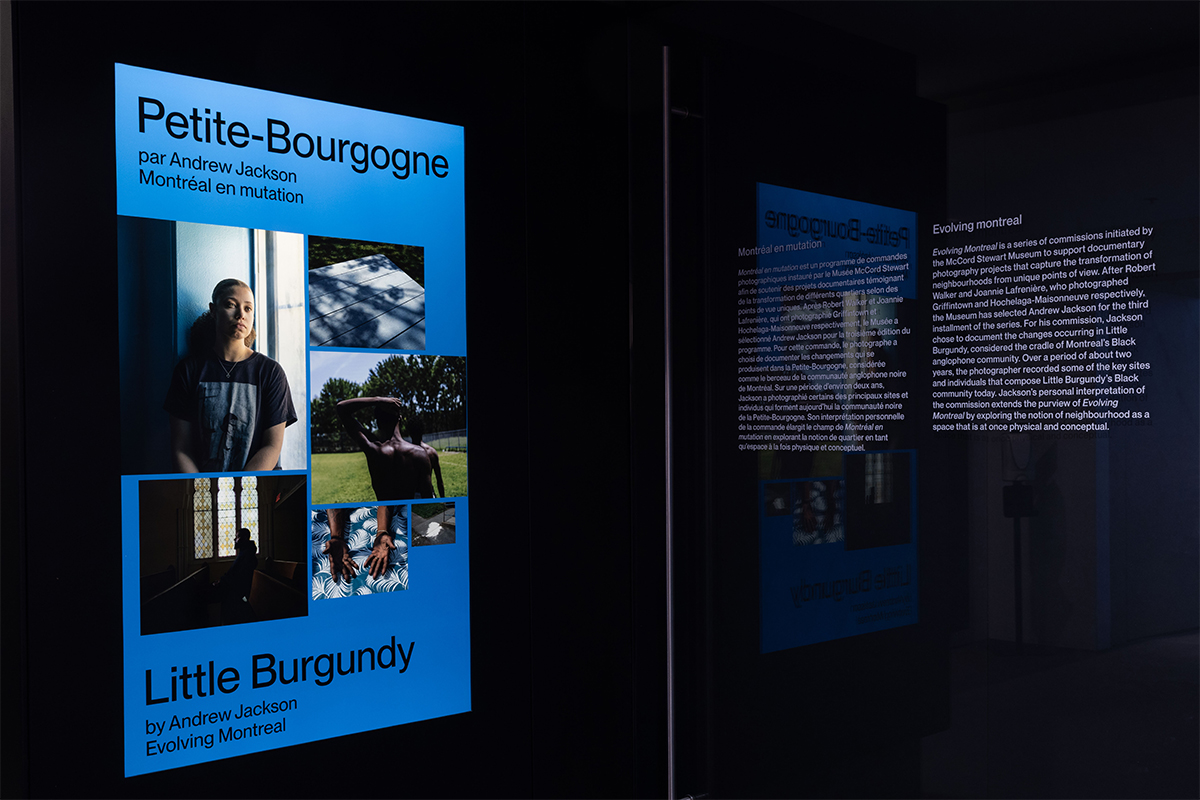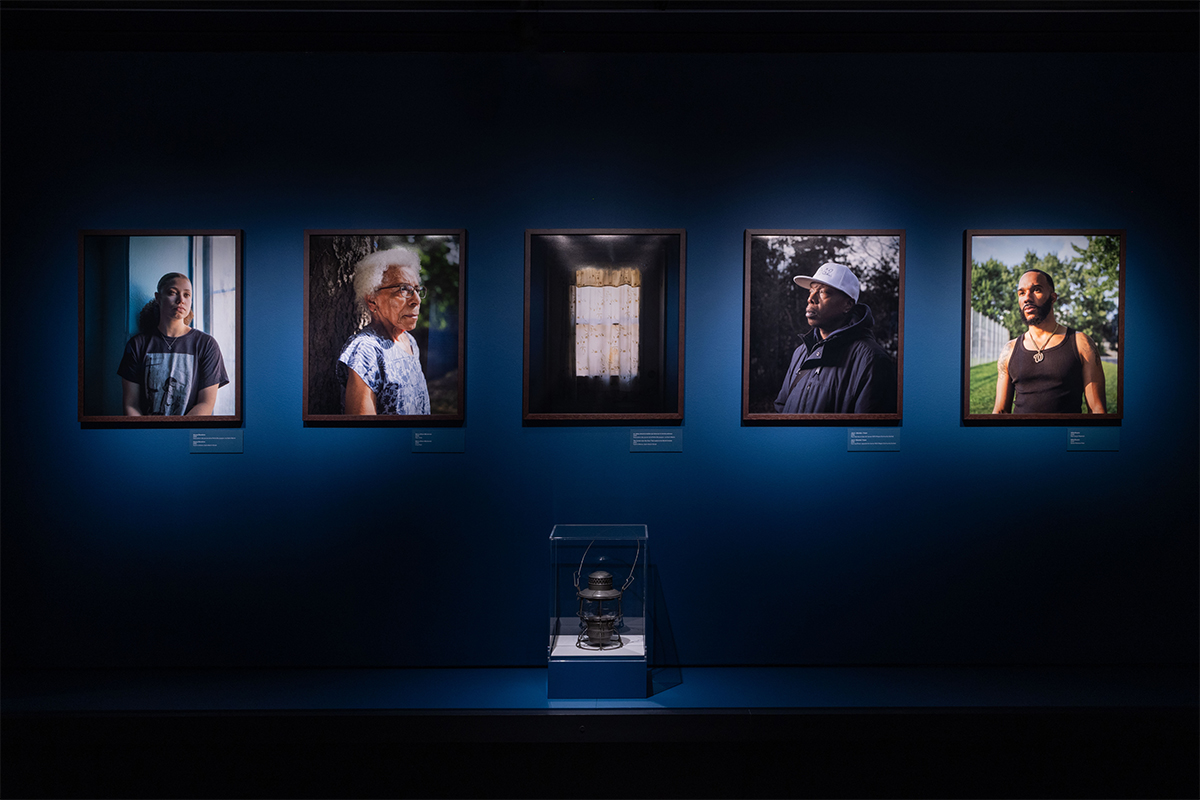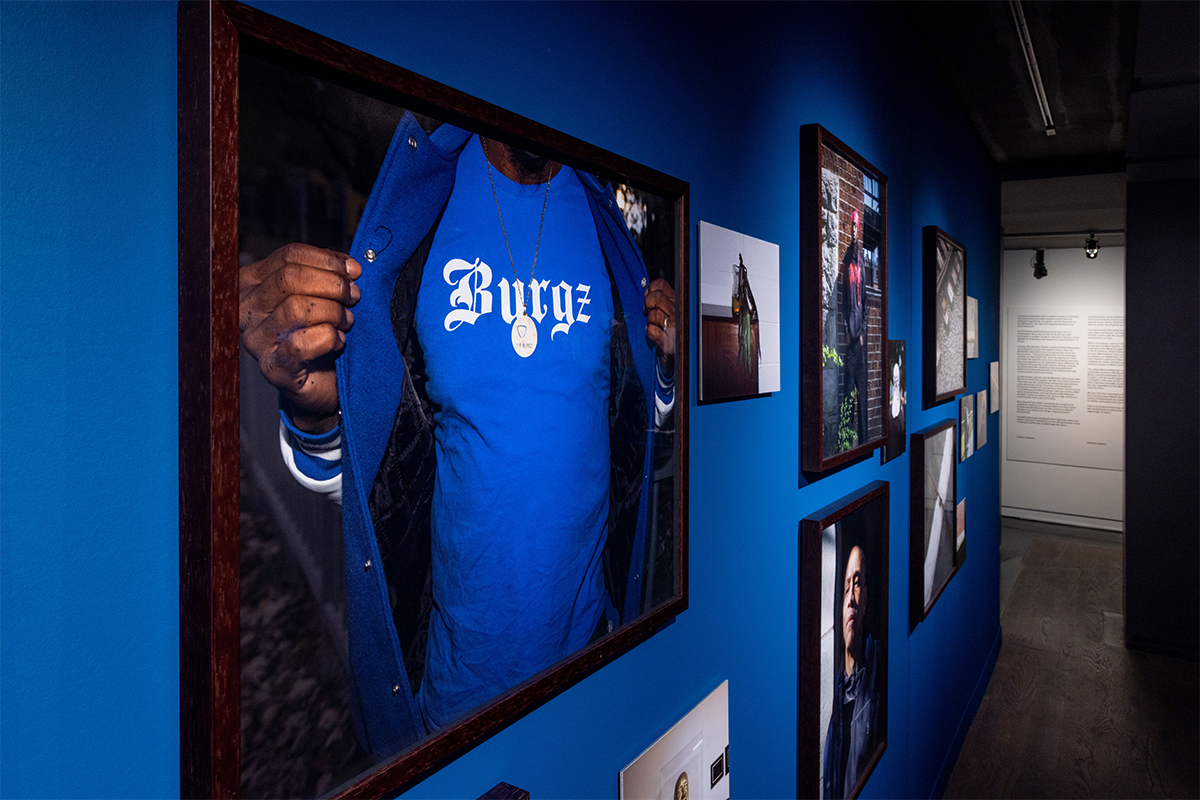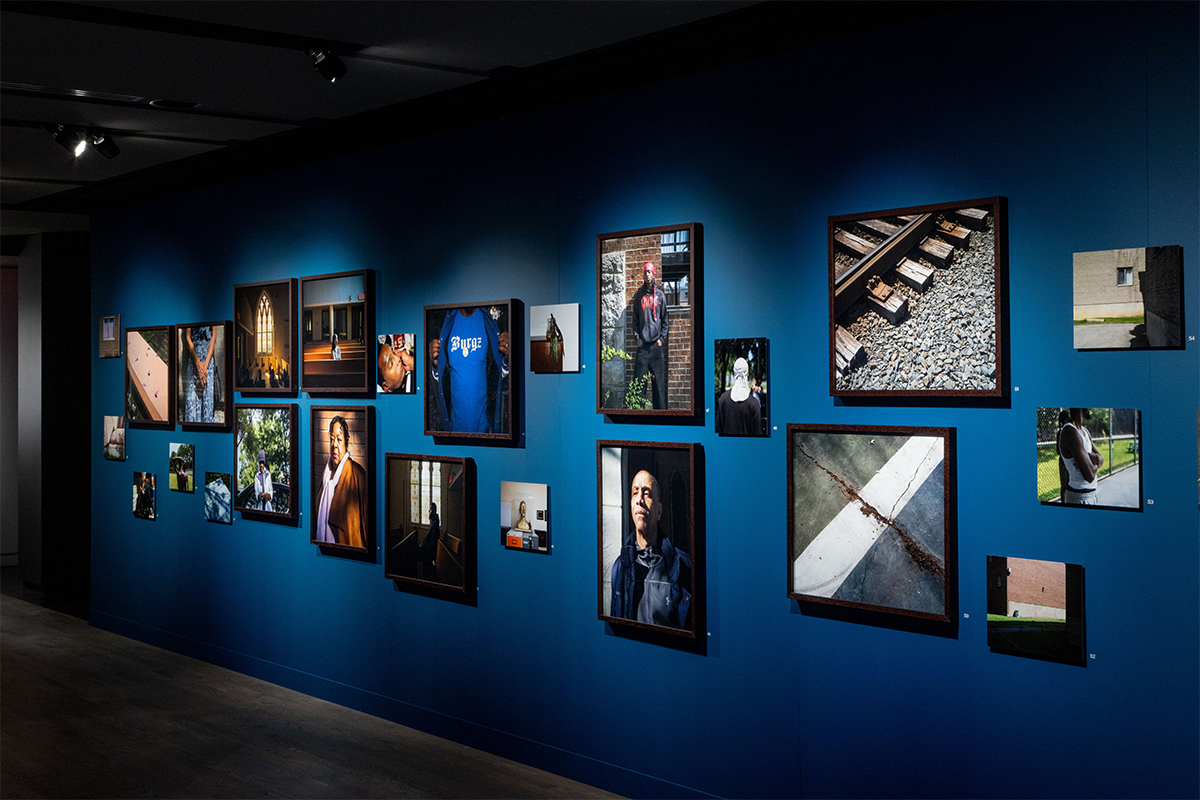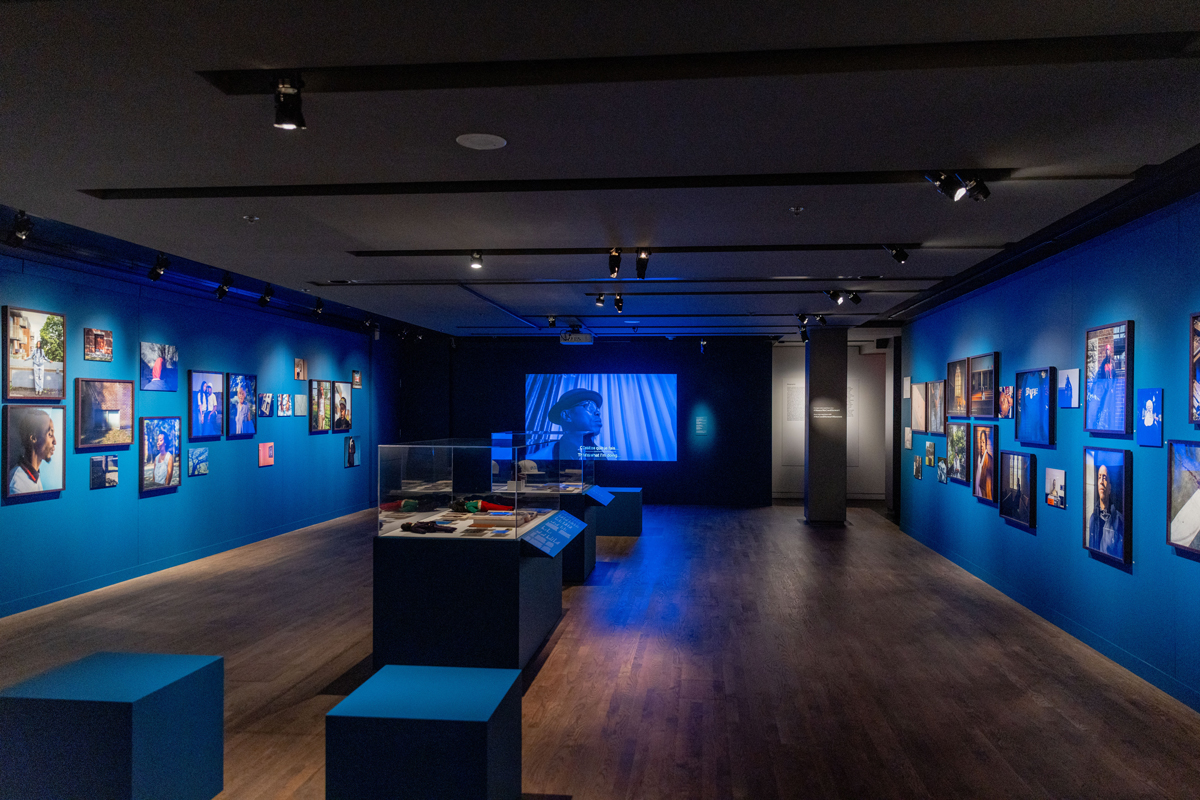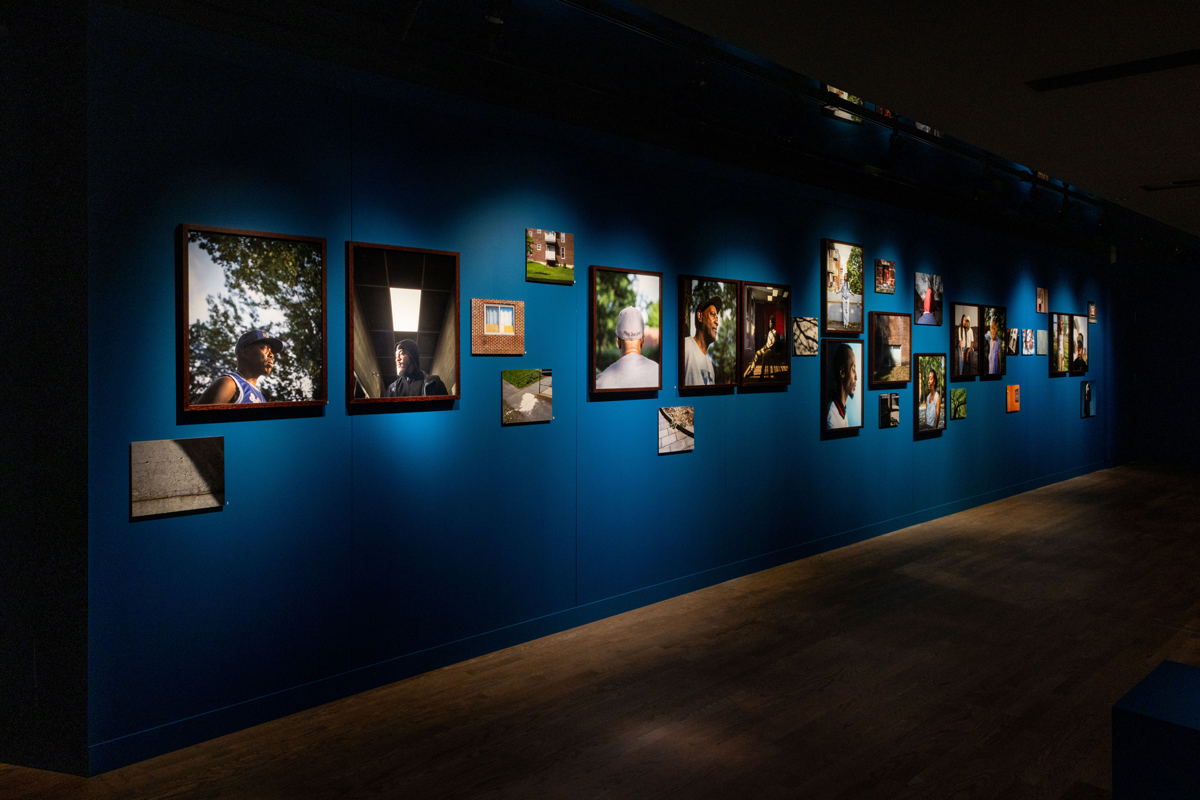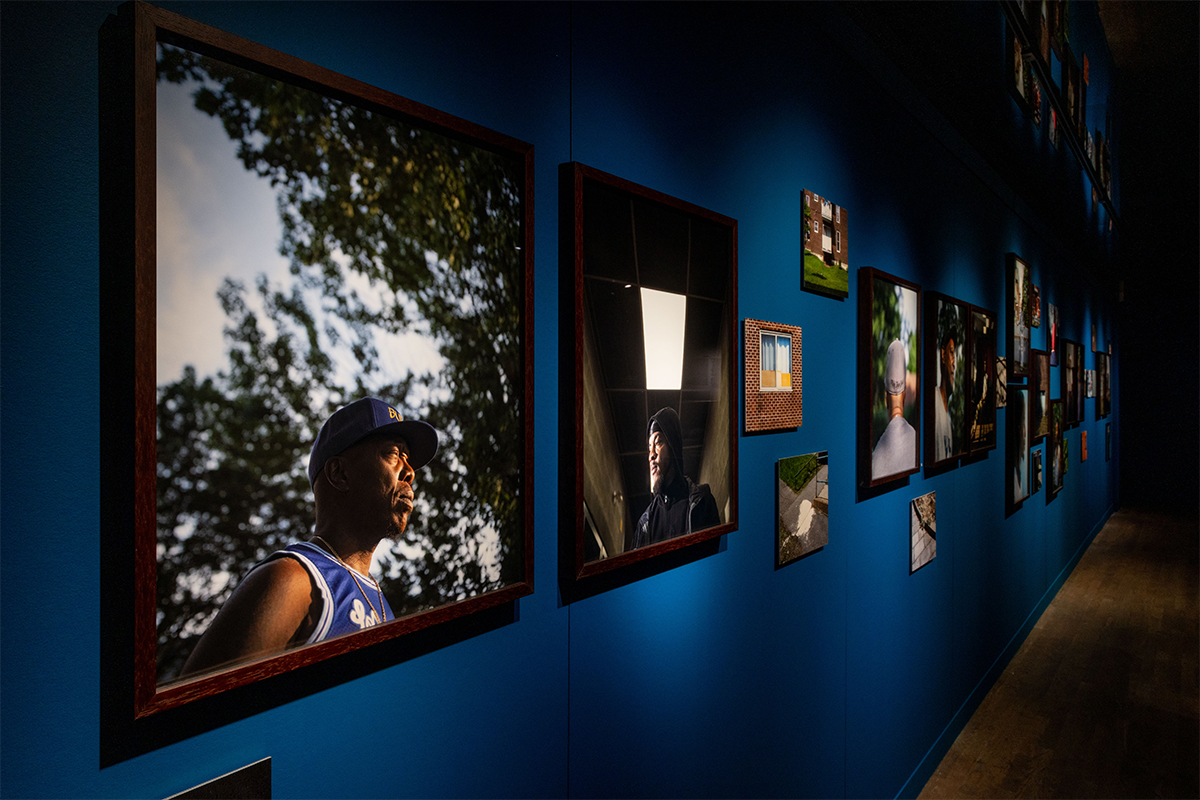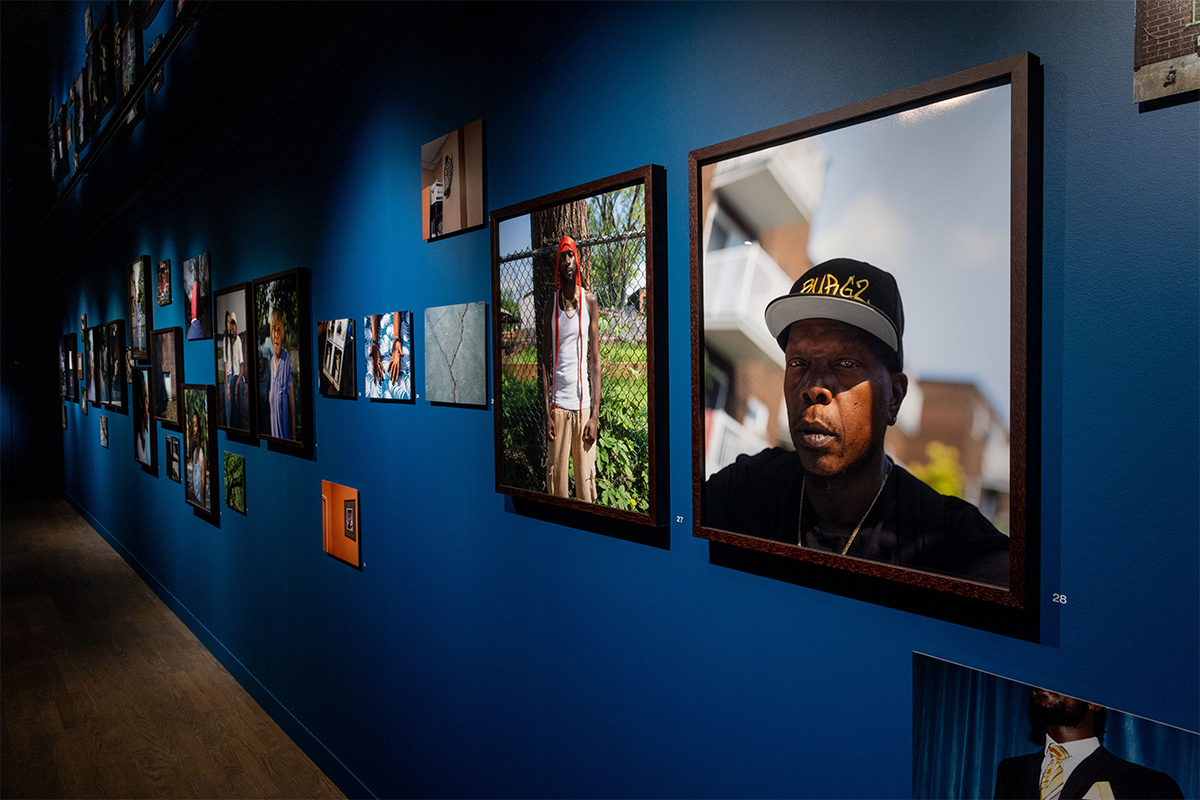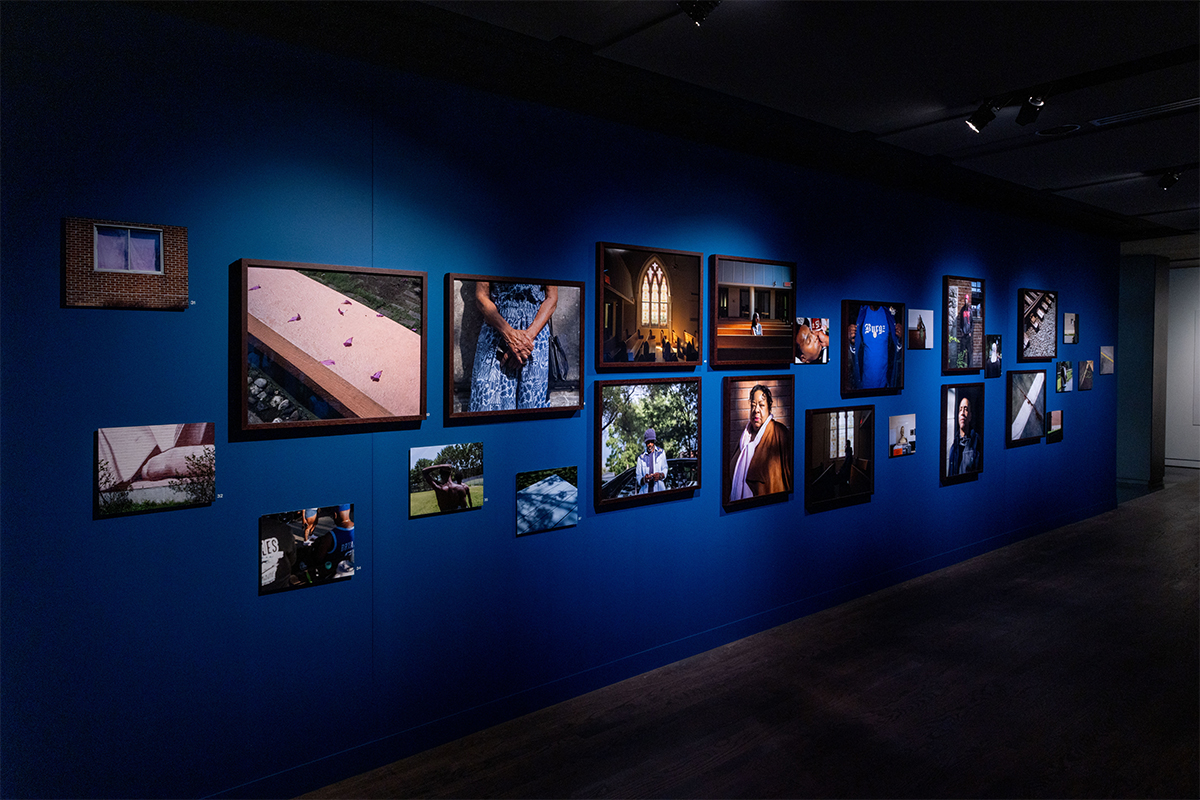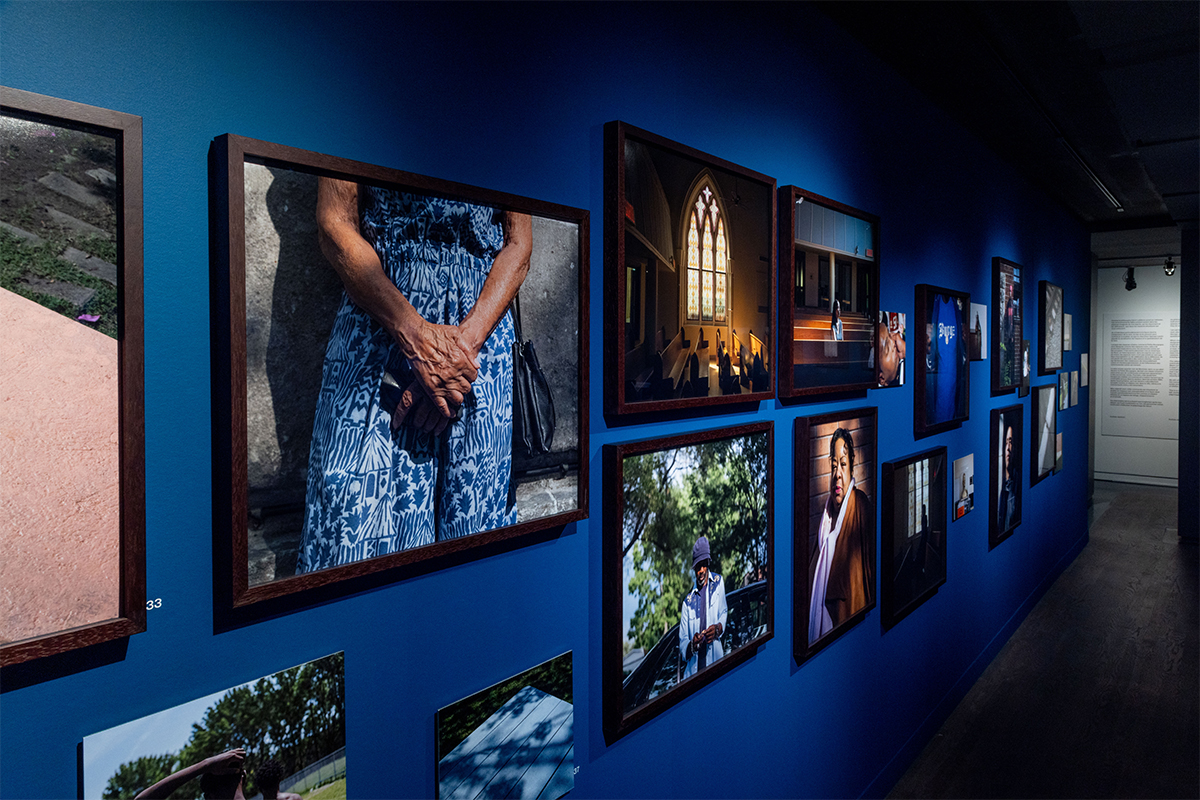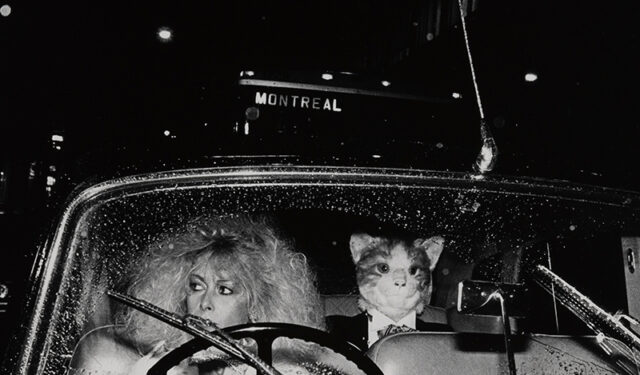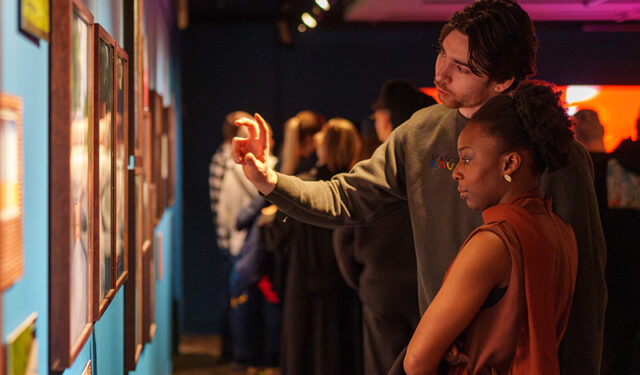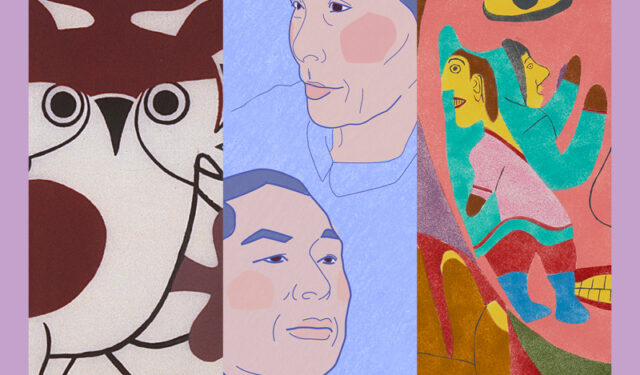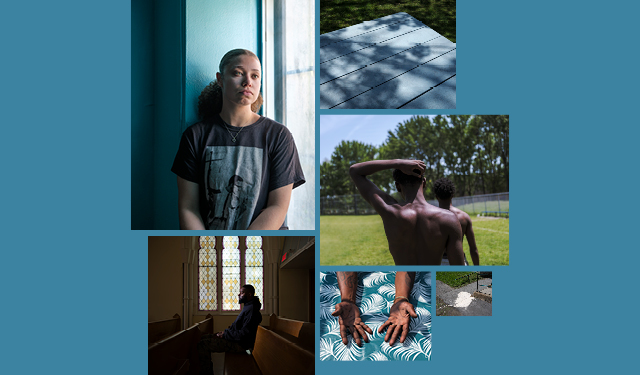News
February 19, 2025
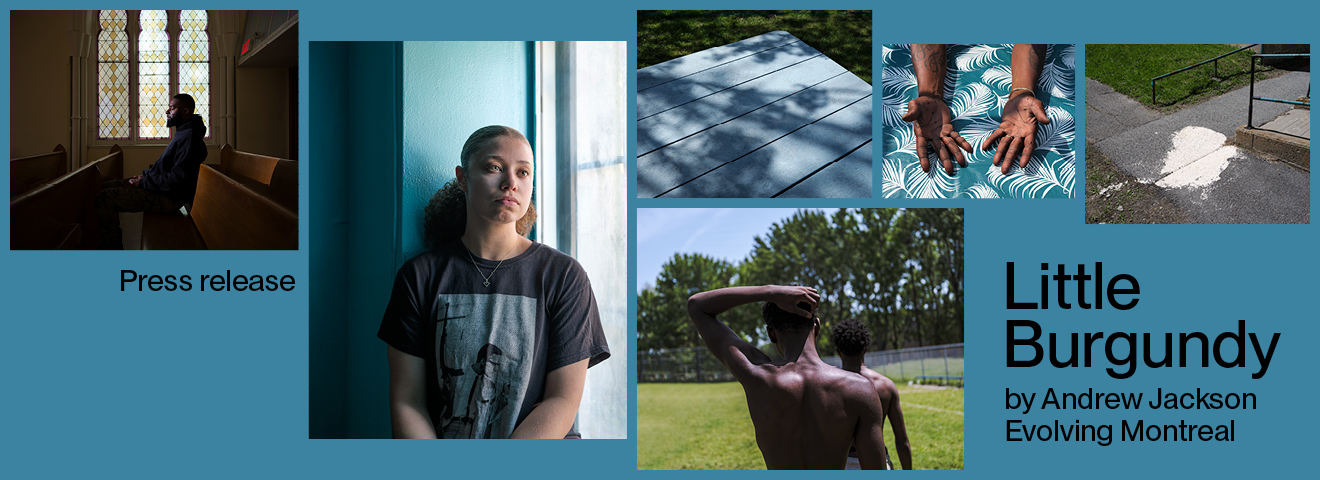
Little Burgundy – Evolving Montreal by Andrew Jackson
Press Release
Black space: Resistance, resilience and the search for belonging
Montreal, February 19, 2025. – From February 21 to September 28, 2025, the McCord Stewart Museum presents Andrew Jackson’s exhibition Little Burgundy – Evolving Montreal, a foray into this south-western district of the city. Over a two-year period, the photographer documented important landmarks for the Black community and met people who grew up there, live there or still have ties to the area. The result is an exhibition featuring 61 photographs of the individuals and sites that bear witness to the urban and social transformations that have impacted Little Burgundy. Three hard-hitting yet touching short films capture local residents’ lived experiences. The exhibition also features some twenty objects and images selected by Andrew Jackson from the Museum’s collection. These artefacts, juxtaposed with contemporary objects loaned by residents, create a dialogue between the past and the present.
Through this project, the photographer exposes the duality involved in designating a place or neighbourhood as a “Black space.” For Black people, it invokes a sense of security, freedom and belonging, while for non-Black persons it conveys a negative image: “When city spaces, such as Little Burgundy, are designated as Black spaces, there are profound implications for Black occupants. This is especially true in North America, where historically, in non-Black minds at least, Black spaces have not existed as places of acceptance or celebration of difference. Rather, they have been linked to notions of failure – notions that become catalysts for urban renewal, gentrification and the ensuing erasure of Black communities,” says Andrew Jackson.
Black space: a pilgrimage site
As part of his research carried out for the Evolving Montreal photographic commission, Andrew Jackson investigates how Black spaces – both physical and discursive – are experienced by Black communities. He is especially interested in how these sites are created and maintained, whether tangibly or symbolically, and in historically occupied physical spaces. His work highlights how these spaces continue to exist in collective memory and how attachment to them endures, long after they have been obliterated by urban renewal and new communities have moved in. As Andrew Jackson states: “This is so powerful that long after Black residents have left, involuntarily or otherwise, they continue to make the pilgrimage of return.”
Little Burgundy
Although the Black population today makes up only about 18% of the neighbourhood’s 11,000 inhabitants, Little Burgundy remains an important historical site for the community. As one of Quebec’s first Black neighbourhoods, it offers a unique perspective on the impact of urban renewal and gentrification on historic populations, as experienced in Montreal and throughout North America in the 20th century. While certain important gathering places like the Union United Church – the oldest Black congregation in Canada – now find themselves outside the neighbourhood’s contemporary borders, they remain intimately linked to the history of the community that founded and animated them.
“After Robert Walker, who photographed Griffintown, and Joannie Lafrenière, who captured Hochelaga-Maisonneuve, we’ve commissioned Andrew Jackson to explore the urban transformations that have occurred in Little Burgundy, as well as its residents’ experiences and memories of such transformations, as part of our Evolving Montreal series. The resulting exhibition is an opportunity to discover Montreal’s Black communities and a neighbourhood whose identity was irrevocably altered in the name of ‘urban renewal’ in the late 1960s and 1970s,” says Anne Eschapasse, President and CEO.
Curatorial and production team
An exhibition produced by the McCord Stewart Museum.
Artist: Andrew Jackson
Curator: Zoë Tousignant, Curator, Photography, McCord Stewart Museum
Project management: Eve Martineau, Coordinator, Exhibitions, McCord Stewart Museum
Design: David Martin
Audiovisual production: Tomi Grgicevic
Download documents
Press release PDF
Press release WORD
Images de presse
Andrew Jackson
Biography

Andrew Jackson is a British-Canadian photographer based in Montreal since 2019. His practice is developed at the intersection of photography and text and, most recently, focuses on notions of family, transnational migration, displacement, trauma, war and collective memory. He recently published the monograph From a Small Island, the first chapter of his ongoing series Across the Sea Is a Shore, a collection of works that explore the intergenerational legacies of migration from the Caribbean to the UK. Jackson has a history of developing platforms that provide opportunities for traditionally excluded groups to engage with photography. In 2021 he created a public engagement project in collaboration with the DESTA Black Youth Network, located in Little Burgundy, which resulted in a group exhibition shown at the PHI Foundation. His works are held in public collections that include the United Kingdom’s Government Art Collection, the Permanent Collection of the New Art Gallery Walsall and the Autograph ABP and Light Work collections. His photographs have also appeared in such publications as the Los Angeles Times, The Guardian, the Financial Times and The New Statesman.
On the Museum’s blog: Little Burgundy – Discussion with Andrew Jackson (Video interview)
Evolving Montreal | Series of photographic commissions
About
Initiated by the McCord Stewart Museum in 2019, the Evolving Montreal series of photographic commissions supports documentary projects that capture the transformation of Montreal neighbourhoods from unique points of view.
“The idea behind Evolving Montreal was born from the conviction that the Museum should play a more active role, both in supporting the local photographic community and in building its own photography collection. The remarkable creativity and documentary value of the projects produced so far in the series are eloquent proof that encouraging contemporary photographers to capture the continuous transformation of the city is a fruitful undertaking,” explains Zoë Tousignant, Curator, Photography.
Programming related to the exhibition
Round table: Occupying Space, Shaping Community
Wednesday, March 19, 2025, 6 to 7 p.m. – At the Museum – Free – In collaboration with Art Souterrain
Little Burgundy: Conversation with artist Andrew Jackson and Zoë Tousignant
Wednesday, May 28, 2025, 6 to 7 p.m. – At the Museum – Free
Discussion workshop on Black spaces in Montreal: Speaking Up, Speaking Out
Wednesday, September 10, 2025, 6 to 7:30 p.m. – At the Museum – Free
Opening hours and admission
Opening hours
Regular schedule (Until June 23 and starting September 2)
Tuesday to Sunday, 10 a.m. to 5 p.m., except Wednesday (10 a.m. to 9 p.m.)
Summer schedule (June 24 to September 1)
Tuesday to Sunday, 10 a.m. to 5 p.m., except Wednesday (10 a.m. to 9 p.m.)
Holiday schedule:
| March Break – Monday, March 3 | 10 a.m. to 5 p.m. |
| Easter Monday – Monday, April 21 | Closed |
| Victoria Day – Monday, May 19 | Closed |
| Saint-Jean-Baptiste Day – Tuesday, June 24 | 10 a.m. to 5 p.m. |
| Canada Day – Tuesday, July 1 | 10 a.m. to 5 p.m. |
| Labour Day – Monday, September 1 | 10 a.m. to 5 p.m. |
Admission:
Adults: $20 | Seniors: $19 | Students (18 to 30): $15 | Indigenous persons: free | 17 and under: free*
Wednesday evenings: free (Little Burgundy – Evolving Montreal by Andrew Jackson and permanent exhibition) or $10 (exhibitions on the 2nd floor).
$2 discount on online ticket purchases.
The McCord Stewart Museum would like to thank BMO Financial Group for the free Wednesday evenings, the Fondation J.A. DeSève for providing free admission for children 12 and under, and the Rossy Foundation for providing free admission to teens aged 13 to 17.
*Free admission for ages 17 and under on presentation of ID. Offer valid for general public visits only. Groups of more than 15 people and organized groups must refer to the group rates.
*Free for children aged 12 and under. Maximum of three children per adult. Offer valid for general public visits only. Organized groups must refer to the group rates.
The McCord Stewart Museum
About
A landmark in the heart of Montreal for over 100 years, the McCord Stewart Museum bears witness to the history of Quebec’s metropolis as well as its influence in Canada and around the world, celebrating the vitality, creativity and diversity of the communities that make it up.
The Museum amplifies their voices by interpreting and disseminating the remarkable heritage under its custody: six expansive collections of 2.5 million images, objects, documents and works of art that make it one of North America’s leading museums.
In keeping with its commitment to decolonization and sustainable development, it creates stimulating exhibitions and educational, cultural and community-engagement activities that look at the social history and contemporary issues affecting its audiences through a critical and inclusive lens, inspiring them to take action for a fairer society.

